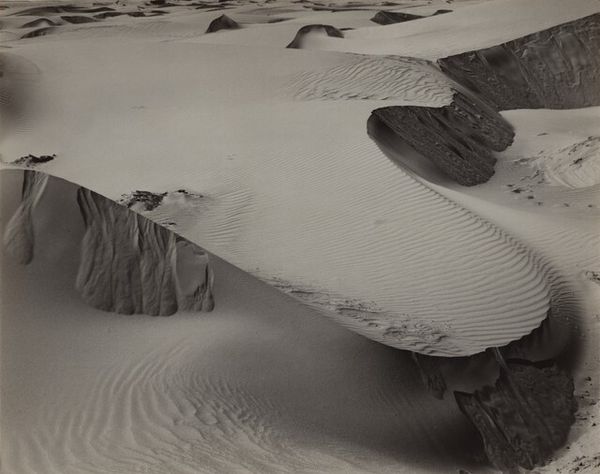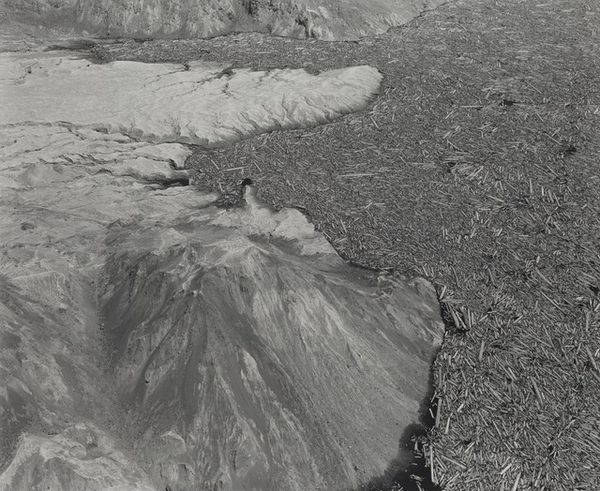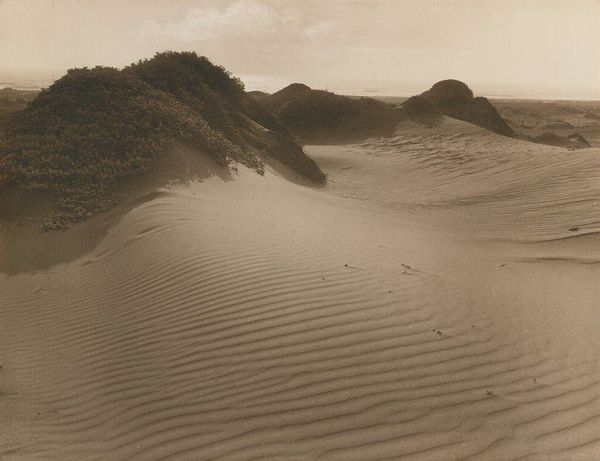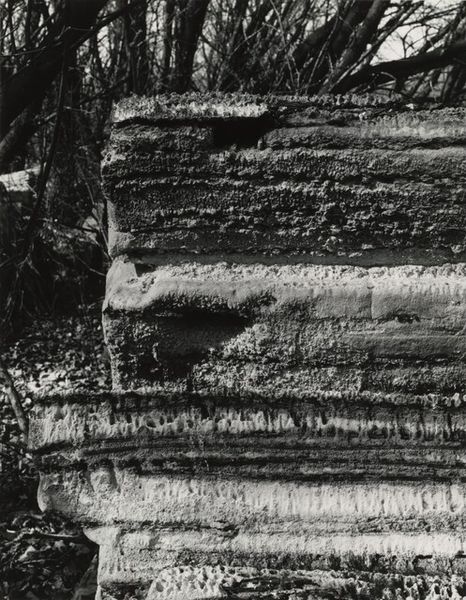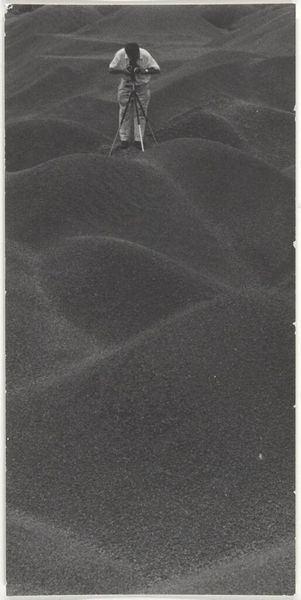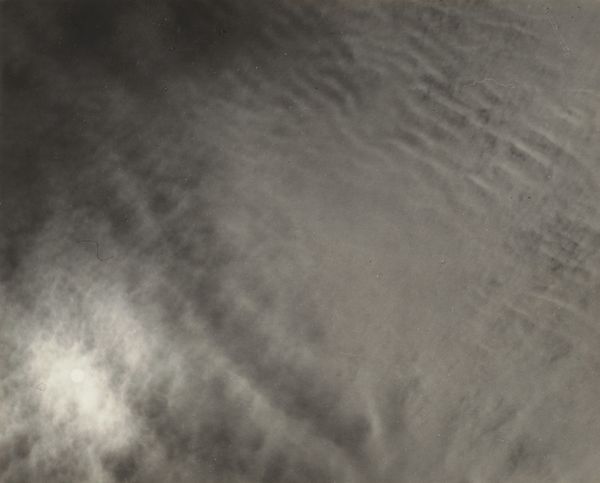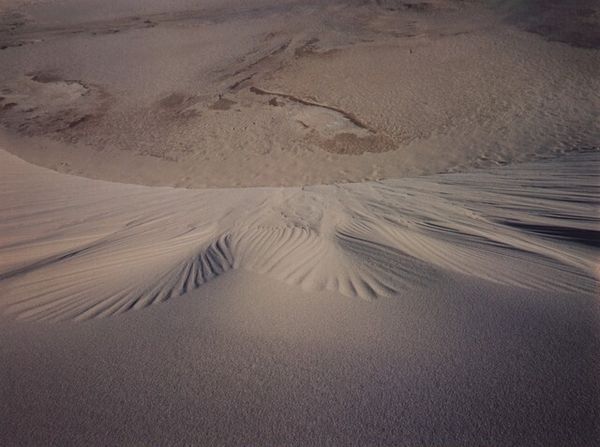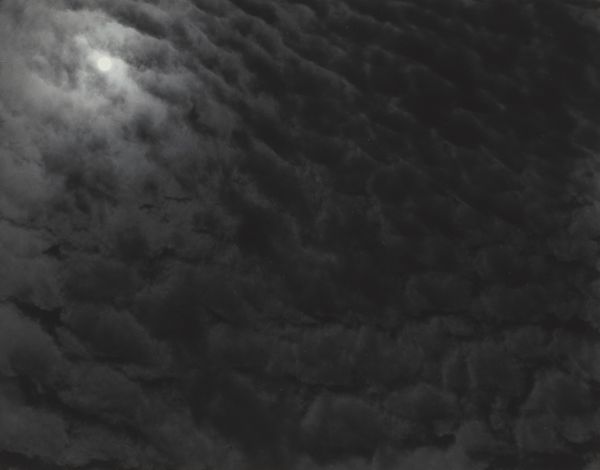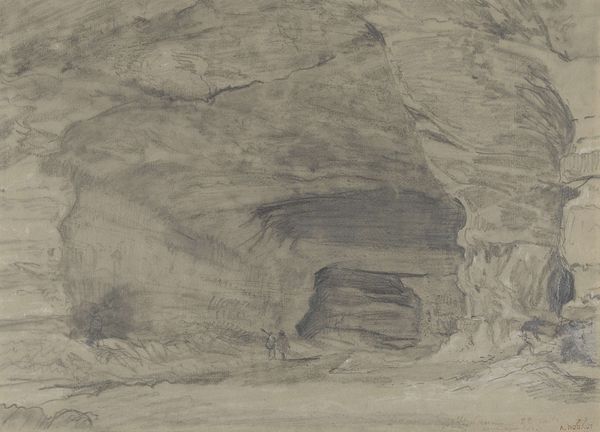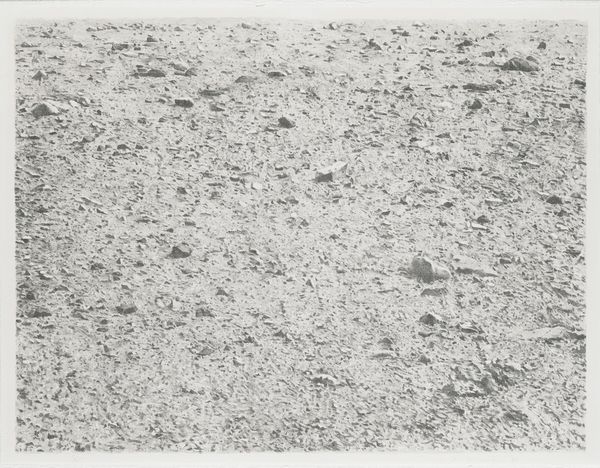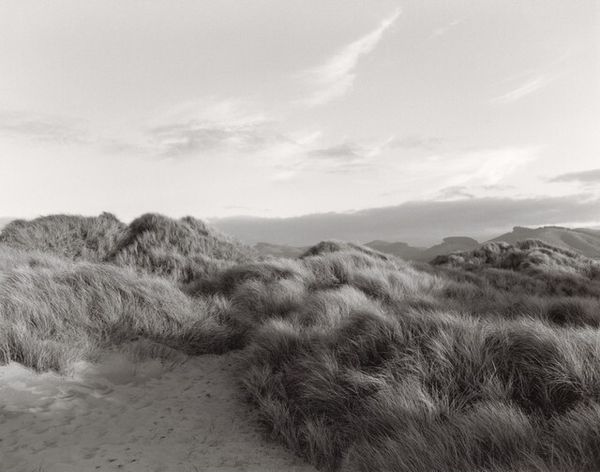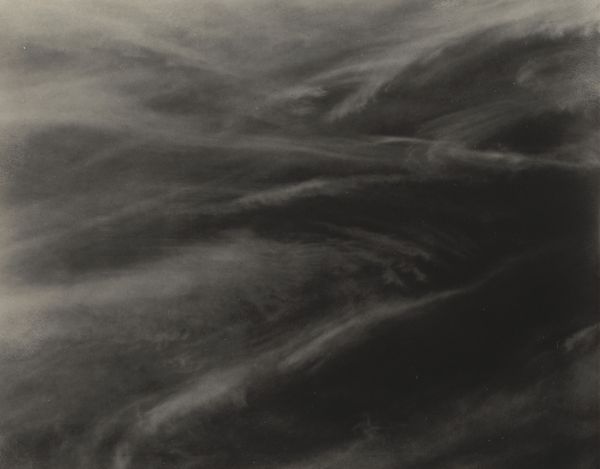
print, photography, gelatin-silver-print
# print
#
landscape
#
photography
#
gelatin-silver-print
#
line
#
modernism
#
realism
#
monochrome
Dimensions: overall: 37.8 x 49.7 cm (14 7/8 x 19 9/16 in.)
Copyright: National Gallery of Art: CC0 1.0
Curator: Look at this captivating image! This is "Sand Dunes, Oceano, California," a gelatin-silver print by Ansel Adams, likely created sometime between 1950 and 1981. Editor: Immediately, I'm struck by its starkness and rhythm. There’s an almost hypnotic quality to those repeating lines, and it seems to portray something primal, quiet and monumental all at once. Curator: Yes! And I think its importance lies not only in the aesthetics but the time in which it was made. Consider this alongside the rise of environmental consciousness and the Cold War. Adams documented these landscapes as pristine spaces threatened by development, and, on another level, as timeless bulwarks to sociopolitical upheaval. His commitment to untouched wilderness had very tangible political consequences and connections. Editor: The image is archetypal. We see wind-sculpted patterns in sand. Dunes appear in myths and stories worldwide, carrying heavy symbolism across cultures; themes of impermanence and transition are prevalent. Those shifting sands remind us both of life's fleeting nature and the patient work of natural forces beyond human control. Curator: Exactly! Also consider that Ansel Adams, although well known for championing conservation through these types of nature shots, has often been criticised for the limited scope of his images; particularly the ways that class and race operated within landscape photography, given Adams’s position in America as a white photographer of the upper middle class. He had blind spots and there are criticisms, as with most artistic work, for a number of good reasons. Editor: Perhaps the simplicity is the strength. By stripping away the excess, focusing purely on form and texture in monochrome, Adams directs our focus inward as much as outward. It makes you ponder your place within the bigger picture, in both literal and metaphorical terms. Curator: It’s interesting you point that out. Maybe he’s nudging us to reconcile with those tensions and complexities you described while searching for the sublime through a commitment to documenting the landscape! Editor: I’d agree! This really made me reflect on how landscapes affect our unconscious understanding and, conversely, the marks our own experiences leave upon a space.
Comments
No comments
Be the first to comment and join the conversation on the ultimate creative platform.
